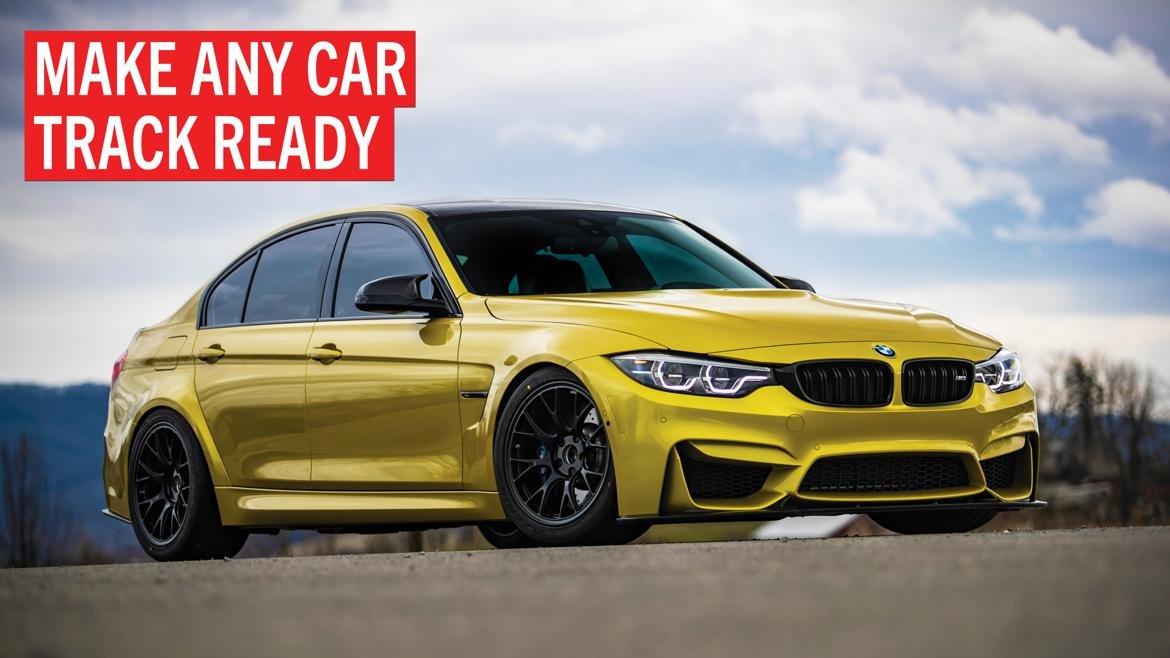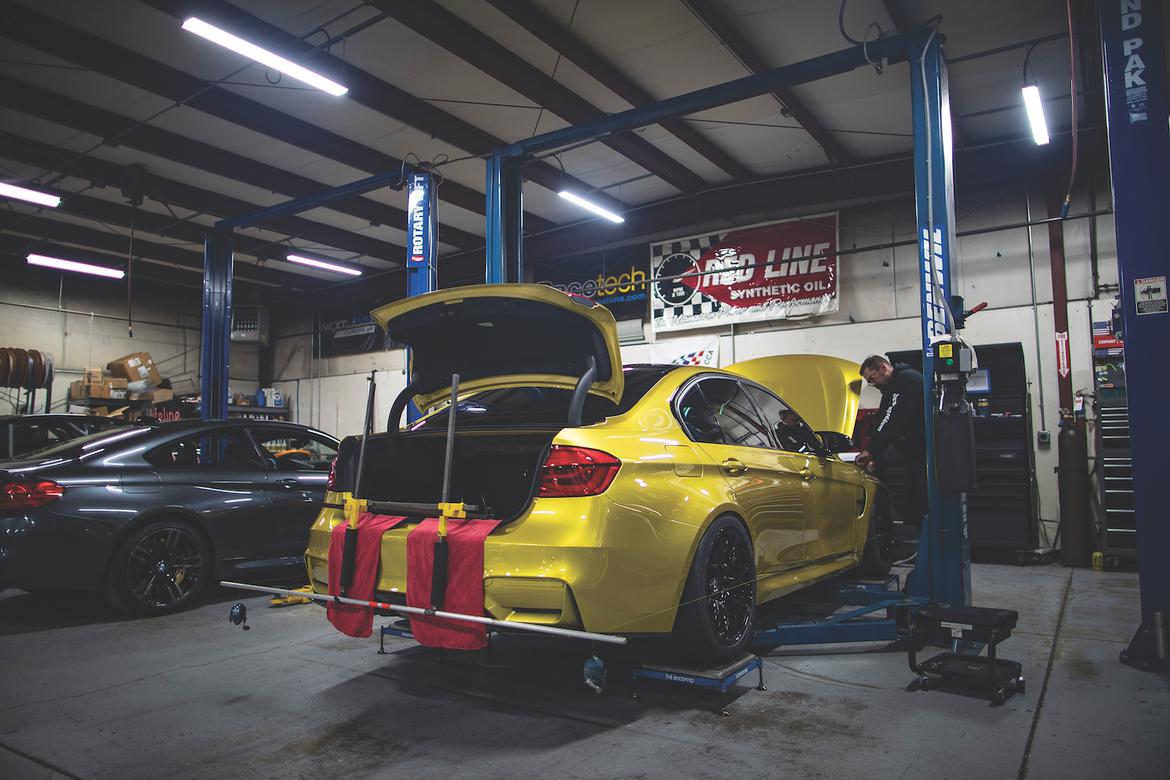
How do you arrange a automotive, whether or not it’s a brand new construct or one that you just’ve been operating for years? On the finish of the day, it’s about maintaining these tires pleased. James Clay, professional driver, president of BimmerWorld and graduate of Virginia Tech, walks us via his crew’s progress, whether or not it’s BMW’s newest GT3-class racer or BimmerWorld’s personal ChampCar effort.
It’s very uncommon that we get a completely new automotive, however after we do, it’s normally an identical configuration–given our BMW focus–to one thing we have now performed earlier than.
The E46 was simply an iteration of the E36 suspension design, for instance. The E9X was a brand new 3 Sequence with an identical entrance strut format however with the addition of a multi-link rear, so we might a minimum of apply the identical entrance fundamentals to that automotive. And the F8X and G8X platforms that adopted had been similar to the E9X.
However most new automotive fashions are developed in professional racing, and by the point most individuals are changing or utilizing them for race use, companies like ours have bit of professional expertise and information accessible.
This information can then translate to buyer vehicles. We do all of the costly improvement and heavy lifting and develop packages and particular person setups for buyer wants.
However whether or not the automotive’s a well-recognized chassis or new to us, how will we truly get it prepared for the observe?
Setting an Early Baseline
I really need the automotive to be able to hit the observe when it leaves the store. So if it’s a brand new chassis, we do the event work to find out our alignment specs: toe curves, camber curves, and so forth.
We even have outlined spring charges, and thus wheel charges, that put us within the field we prefer to work in. Shock selection is core.
[How To Calculate Spring Rate–and How to Understand Cutting Coils | Handling Basics]
This fashion we are able to have the suitable baseline components on the automotive and base static alignment settings. This early work additionally reveals us how that static alignment will translate to a dynamic alignment as soon as on the observe and below load.
That is, in fact, assuming that we’re engaged on a race automotive with racing components. While you’re engaged on a avenue automotive, virtually by definition you’re on the comfortable facet of what could be thought of optimum–and once I say “race automotive,” I’m translating that to “optimized.”
Someplace on the market exists the proper steadiness of efficiency and stiffness. A superb alignment earlier than leaving house ought to get you within the ballpark.
For instance, if I’ve a avenue automotive with some racing components on it, I do know that I virtually at all times wish to make it even stiffer as a result of the bottom automotive is simply too comfortable. Optimum efficiency is a curve with a zenith–too comfortable and also you aren’t optimum, and too stiff and you aren’t optimized on the opposite facet of that good level.
We anticipate the optimum level on a race automotive, however I’m conscious we could have to stiffen or soften the setup to nail it. However on a avenue automotive, we’re engaged on the entrance facet of the curve, and we virtually at all times see advantages from stiffening as we climb towards optimum. That very same curve idea applies to something in setup: tire pressures, spring charges, shock settings, and so forth.
[How to set tire pressure, align your chassis and shop smart]
Trackside Setup
The preliminary run on the observe is at all times used to find out general steadiness of the automotive. Is it coupled, that means the entrance stiffness is balanced with the rear stiffness? Or in lengthy, sweeping, high-load curves, do we want kind of entrance or rear stiffness? That is outlined by spring fee and, to a lesser diploma, anti-roll bar stiffness.
Then we begin engaged on extra dynamic conditions that additional deliver within the bars and shocks. I separate a nook into 4 sections: braking, flip entry, mid-turn and power-down.
Aero provides some complexity, and the driving force wants to have the ability to differentiate an aero steadiness from the automotive’s platform steadiness. And whenever you begin engaged on transitions between linked turns and longer linked sections of observe, that provides one other layer.


After finding out automotive steadiness, we search for the largest downside: What’s the one factor that’s maintaining the automotive from going quicker?
However we even have to take a look at that a part of the observe. If there’s a big mid-corner difficulty, for instance, we want to verify the issue isn’t attributable to braking and switch entry.
Tuning a suspension correctly is known as a balancing act and an artwork kind. One adjustment to deal with a selected downside in a selected place on observe or part of a flip typically has an impact, desired or not, elsewhere as properly. It’s a matter of being conscious of all of the potential cause-effect relationships and shifting ahead methodically.
Knowledge vs. the Driver’s Suggestions
The motive force is totally crucial to the tuning course of. We are able to use tire put on (which takes time to develop) and information (though it takes a higher-level engineer to get previous the trivialities and into the actual root of what the info is telling you), however the driver is by far the perfect software.
That being mentioned, it takes a driver with particular improvement expertise to shortly transfer the method ahead. So many drivers are accustomed to driving no matter they’re given, so it takes talent to acknowledge whenever you’re driving round an issue and when it’s best to as a substitute make the automotive higher so that you don’t need to.
However with that process comes accountability: It’s important to be sure you’re addressing the actual or proper downside. In any other case, even with an skilled engineer guiding the method, you possibly can find yourself in a no man’s land as a result of modifications are made on incorrect suggestions that can transfer you outdoors of the field that you just actually wish to be in.

As soon as on the observe, take heed to the driving force however hold a detailed eye on the numbers. Whereas driver confidence issues, does the info say one setup outperforms one other?
A few key issues will assist information you right here. First, at all times use the stopwatch. How a driver feels issues, and a few drivers will go quicker as a result of they’re extra snug with a sure setup, however at all times know whenever you’re making that call and sacrificing final pace for consolation.
Likewise, simply because one thing feels quick doesn’t meant it’s. Use the info and stopwatch to judge. Tire put on and another issues matter, however at all times be conscious of the clock.
Second, and most vital, do not forget that when you will have a methodical and documented strategy (you documented every thing, proper?), you possibly can at all times return when you had been flawed. Don’t be afraid to show knobs and alter issues. In case you get it flawed and also you don’t prefer it and you’re slower, change it again. Even with an skilled driver, we are able to typically not know what facet of the curve we’re on from that optimum level, so adjusting one factor a notable quantity after which going the opposite route from the baseline will give nice perception.
Trending Merchandise




